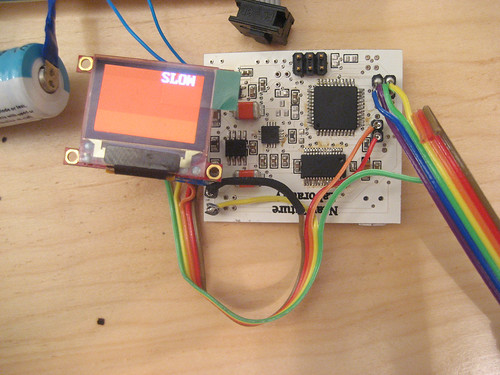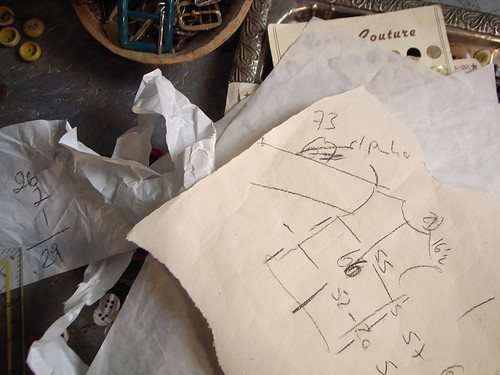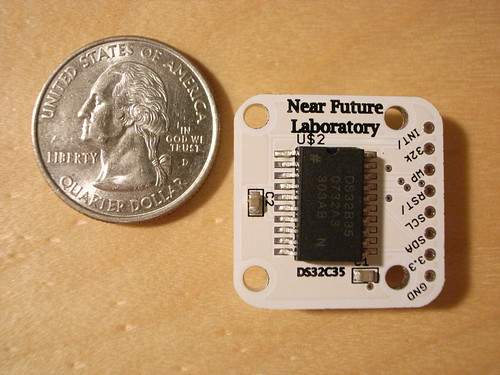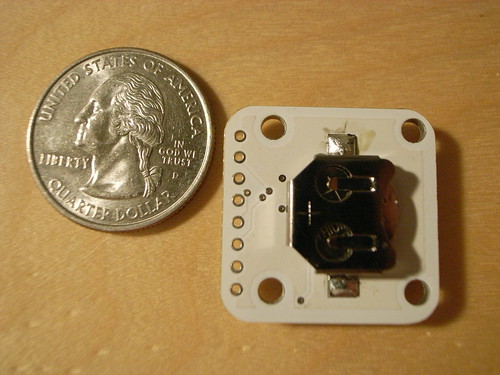This is the second prototype hardware for the Slow Messenger project we’ve been working on. It’s slow going, naturally enough, probably the result of too many design projects for peculiar mobile devices going at once.
This prototype is using a small 96 x 64 pixel OLED display by 4D Systems and the idea is that you’d have your “instant” messages displayed over relatively long periods of time, and the more you carried the messaging device with you — the more you held it — the more of the message you would see. If you left the device by itself — thereby not really showing much commitment or affinity to the message — the longer it would take for the message to reveal itself.
The conceit of the project is to create a kind of “durable affinity” amongst the messaging participants. By coupling the message’s slow unfolding to a tangible object that the recipient must hold and carry around, the communication has a kind of interaction ritual that might be more intimate than punching little plastic squares while staring at a screen. Turning time, touch into a condition of affinity and commitment is the interaction ritual we are exploring.
The project is a “theory object” — not necessarily a product in the sense of something that could have a deep impact on the quarterly results of a large public company. It is meant to be a way to critique an aspect of digital networked interaction through a provocative designed object. Going beyond speculation to specification, design, fabrication, prototype experiences, iteration is significant. It creates something that helps me think about the questions that were initially raised in a day dream much, much more than only spinning the thoughts in my head and as writing on paper could ever possibly do. Constructing the device – taking the idea and making it artifact and then giving them to people to experience and provide their thoughts – is a crucial way to think about the questions and the larger problem of having sensible things to say about the near future of these sorts of interaction rituals.
Efficient, quick communication is a product of power-politics. In order to exert one’s influence geographically, it’s necessary to communicate one’s will over distances and do so in as little time and with as much efficiency as possible. Slow messaging just doesn’t make sense in that context. And that simple necessity has soaked through most of our forms of communicating, even when we are not particularly powerful. It just becomes an assumption that communication happens quickly – not because it cannot be any other way, but because it has become part of the unquestioned “DNA” of communication as a social practice.
But, as in most of our projects, we want to work from unconventional assumptions in order to see what the experiences of communication in a different “anti-” universe might be like. What can we learn about our existing social practices of communication – instant messaging, SMS, always-available styles of presence online – if we do an experiment where the assumption is the opposite. In this case, if we make communication much slower, what do we learn about new ways of relating and sharing with our friends and loved ones? We’re not necessarily assuming that this is the best way to communicate, for example. We’re not making a new product or something of this sort. It is very much an experiment in design as a way to answer some perplexing questions about the relationships we maintain through all these peculiar and compelling messaging systems.



